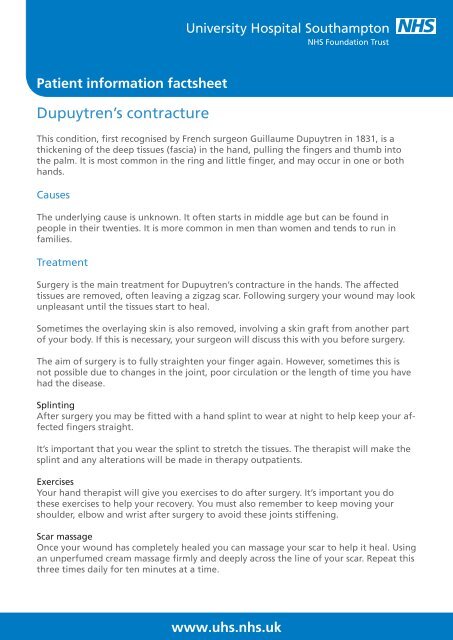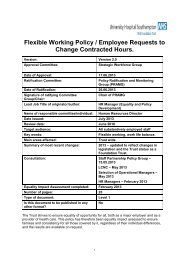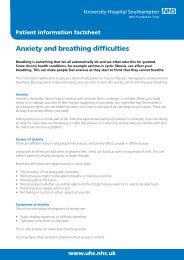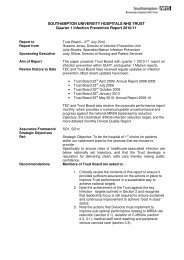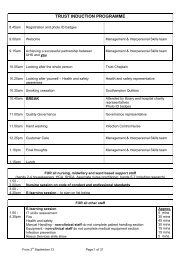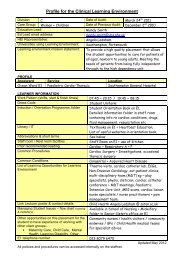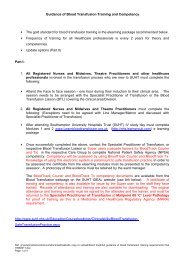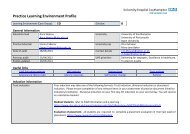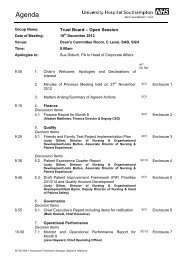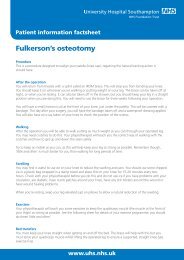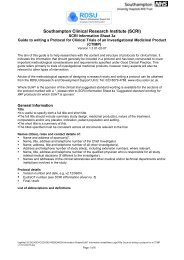Dupuytren's contracture - patient information
Dupuytren's contracture - patient information
Dupuytren's contracture - patient information
Create successful ePaper yourself
Turn your PDF publications into a flip-book with our unique Google optimized e-Paper software.
Patient <strong>information</strong> factsheetDupuytren’s <strong>contracture</strong>This condition, first recognised by French surgeon Guillaume Dupuytren in 1831, is athickening of the deep tissues (fascia) in the hand, pulling the fingers and thumb intothe palm. It is most common in the ring and little finger, and may occur in one or bothhands.CausesThe underlying cause is unknown. It often starts in middle age but can be found inpeople in their twenties. It is more common in men than women and tends to run infamilies.TreatmentSurgery is the main treatment for Dupuytren’s <strong>contracture</strong> in the hands. The affectedtissues are removed, often leaving a zigzag scar. Following surgery your wound may lookunpleasant until the tissues start to heal.Sometimes the overlaying skin is also removed, involving a skin graft from another partof your body. If this is necessary, your surgeon will discuss this with you before surgery.The aim of surgery is to fully straighten your finger again. However, sometimes this isnot possible due to changes in the joint, poor circulation or the length of time you havehad the disease.SplintingAfter surgery you may be fitted with a hand splint to wear at night to help keep your affectedfingers straight.It’s important that you wear the splint to stretch the tissues. The therapist will make thesplint and any alterations will be made in therapy out<strong>patient</strong>s.ExercisesYour hand therapist will give you exercises to do after surgery. It’s important you dothese exercises to help your recovery. You must also remember to keep moving yourshoulder, elbow and wrist after surgery to avoid these joints stiffening.Scar massageOnce your wound has completely healed you can massage your scar to help it heal. Usingan unperfumed cream massage firmly and deeply across the line of your scar. Repeat thisthree times daily for ten minutes at a time.www.uhs.nhs.uk
Patient <strong>information</strong> factsheetRisksScarOccasionally, scars will contract or tighten. This will be reduced by wearing your splintand massaging the scar.InfectionThis can occur after any operation. Lower your risk of infection by keeping your scar dryand clean during daily activities.StiffnessA small number of people are sensitive to surgery and their hand may become swollen,painful and stiff after their operation.Nerve damageThere is a risk of small nerves in the hand being affected by surgery, causing permanentnumbness or tingling. This happens very rarely however.RecurrenceDue to the disease process it is possible for Dupuytren’s to return in the operated fingerslater.ExtensionIt is also possible for the disease to spread to other fingers on the same hand or theother hand.Further <strong>information</strong>If you have any questions or concerns before or after your operation, please discuss themwith a member of the hand therapy team. Further <strong>information</strong> about this condition isavailable from websites such as NHS Choices at www.nhs.uk and The British Dupuytren’sSociety at www.dupuytrens-society.org.uk.Contact detailsHand therapy team 023 8120 6459Therapy out<strong>patient</strong>sB levelWest WingSouthampton General HospitalTremona RoadSouthamptonSO16 6YDIf you need a translation of this document, an interpreter or aversion in large print, Braille or audio, please call 023 8120 4688for help.Version 1. Published February 2014. Due for review February 2017. DUCO001.01www.uhs.nhs.uk


